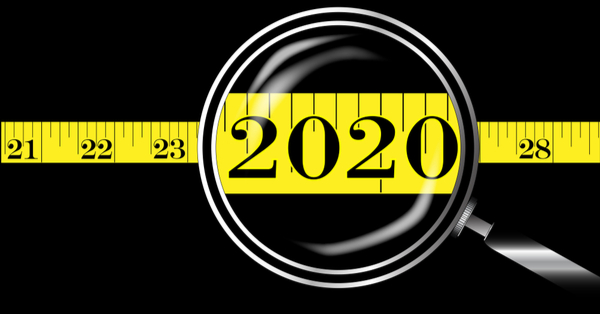The Call for Clarity: How Measurement Will Change in 2020

Going into 2020, marketers are seeking a more complete view of their audience. This is changing how they look at and measure campaigns, leading to a variety of changes to how they approach measurement. Stephen Jepson, EVP of Advertising Measurement at DISQO shares details about these changes.
Every day, marketers look for ways to improve the effectiveness of their campaigns and drive measurable growth. More often than not, their efforts are hindered by a lack of visibility into the metrics that matter.
As much as martech has improved over the last decade, it has also been rife with challenges. Third-party tracking solutions have tried their best to trace the path to purchase, but they have been limited by the crumbling cookie, expanding privacy laws, and ever-growing walled gardens. As sophisticated as a given multi-touch attribution solution might be, each makes assumptions that fail to equip marketers with the clarity they have needed.
Learn More: The State of Localized Programmatic: Why Marketers Need to Adopt a Personalized Digital Strategy
Fortunately, things are changing. The opportunity for improved visibility is here, and many are beginning to demand it. Over the last year, we’ve seen more marketers seek answers to the questions that truly matter:
- How can I identify a brand intender faster?
- How can I measure lift beyond my owned properties?
- How does my brand fare within the walled gardens?
- What misconceptions do I have about my audience?
- What are the real factors affecting my funnel?
- What else can I discover about my audience’s attitudes and behaviors?
To answer these questions, marketers are seeking a more complete view of their audience. As a result, how they look at and measure campaigns is irrevocably evolving. As such, expect to see the following shifts take place in 2020:
1. Clarity Will Reign Over Clutter.
Every day, marketers are inundated with more data than they have time to make sense of. When they do invest the internal resources to better understand their audiences, the picture is far from complete and fuzzy at best. Behaviors don’t match attitudes, leaving brand and performance teams at odds with one another. Campaign reporting might show an uptick in sales, but attribution models aren’t trusted and results are hard to replicate without a deeper understanding of audience motivators.
Meanwhile, third-party measurement solutions have touted the number of individuals they can match or the number of integrations they have as some measure of their worth. Setting aside the fact that these figures are often optimistic at best, they are irrelevant to what marketers need and to where the industry is headed.
Last year, the KonMari method revolutionized how many people look at their physical possessions. In 2020, expect a similar philosophy to drive how marketers engage with their various vendors: those who provide high quality and useful insights will remain. Those who peddle in quantity at the expense of quality will be thanked and sent on their way.
2. Campaign KPI’s Will Change.
In the past, timely performance metrics have been limited to first-touch and last-touch activity that answered whether users engaged with an ad or made a purchase, but failed to accurately connect the dots in between. Even multi-touch attribution solutions, never having full line of sight due to gaps in data, have failed to give credit to the myriad factors affecting perceived campaign performance.
Did an individual exposed to an ad subsequently behave in any measurable way that would convey a heightened interest in the product or brand? What are their intentions? Did they become more or less interested after a third-party site visitation?
As marketers seek more clarity into the full path to purchase, the KPIs they are holding their vendors to are becoming more sophisticated. In 2020, expect behavioral metrics like a Brand Intender Rate to show up in more campaign reports.
Unlike attitudinal based brand lift metrics, behavioral-based brand intention rates (BIR) assess campaign lift based on actual, measurable audience behaviors in the hours, days, and weeks after an ad impression.
Learn More: How Is Machine Learning Transforming Video Advertising
3. Cookies Will Give Way to Connections.
Already, cookies have their limitations. Trails are interrupted as users delve into walled gardens or switch devices, and each new consumer privacy law limits them further. As marketers have increasingly sought a more complete picture of the path to purchase, they have sought measurement solutions that are not dependent on cookies.
While this might sound easier said than done, it’s already a reality for dozens of Fortune 100 brands and the agencies who serve them. How? Measurement is moving toward a cookieless future where direct, first-party connections with fully opted-in audiences are providing a more complete view into online behaviors.
So, as we enter the next decade, expect cookie dependence to recede as more brands turn to richer, direct connections with their audiences. For vendors that want to thrive, know that merely offering GDPR or CCPA compliance isn’t enough. Sustainable growth — whether for a brand or the martech vendors that support them — is rooted in real, high-quality connections between people and the brands they love.
Contact
Press Contact
David Grabert pr@DISQO.com

Subscribe now!
Get our new reports, case studies, podcasts, articles and events
